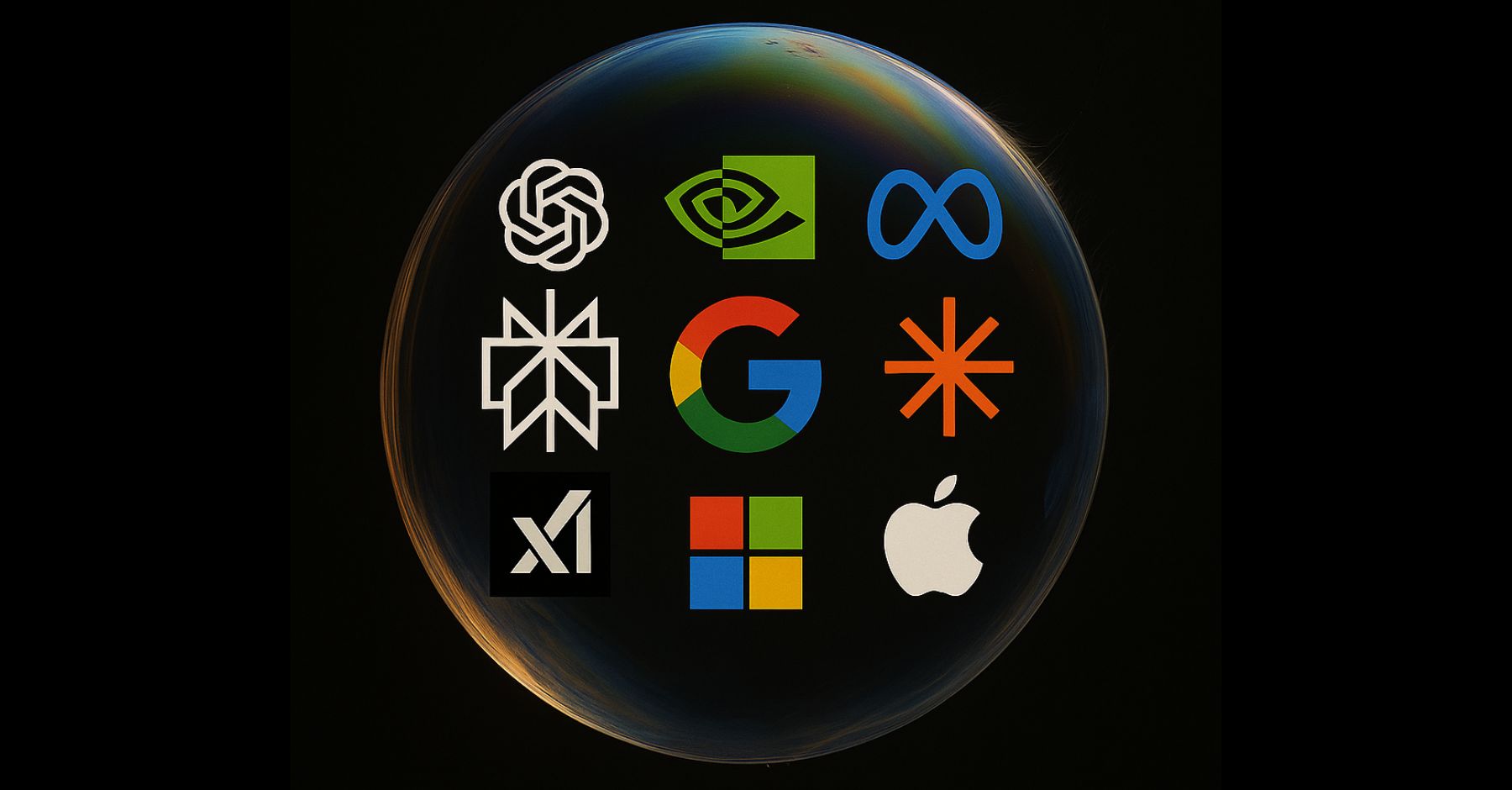Each week we’ll gather headlines and tips to keep you current with how generative AI affects PR and the world at large. If you have ideas on how to improve the newsletter, let us know!
What You Should Know
What’s All This About an AI Bubble?
In 2000, the dot‑com bubble collapsed when investors piled money into internet startups regardless of whether they could survive. The bubble erased around $5 trillion in market value as the Nasdaq plunged more than 75%. Some are beginning to wonder if there’s an AI bubble that’s about to burst, considering Ernst & Young recently reported global venture capital investments in generative AI hit $49.2 billion in the first half of this year, outpacing the $44.2 billion in all of 2024.
OpenAI CEO Sam Altman, Alibaba Co-Founder Joe Tsai, and Apollo Global Management Chief Economist Torsten Slok have all warned that AI valuations may be even frothier than in the dot‑com era. There isn’t a consensus here, though. Former Google CEO Eric Schmidt says AI is “unlikely” to be another bubble, and AMD CEO Lisa Su agrees. The conversation will continue as Nvidia reports earnings on Wednesday, which will be seen as another indicator.
There’s no doubt that investments in AI are soaring. Big Tech is spending hundreds of billions on infrastructure. Not every AI venture will stick. In fact, a recent MIT study shows that 95% of organizations aren’t getting returns on their AI investments. But that doesn’t mean AI itself is going anywhere. For most businesses, a potential AI bubble is not a threat — unless AI is your whole product.
What matters is staying current. The pace of change is relentless, but communicators who track the latest tools can gain value from whatever investments they’re making in AI platforms. Used wisely and responsibly, AI can help you move faster, work smarter, and deliver sharper results.
Elsewhere …
- PODCAST: What Ai4 Taught Us About Data, Demand, and Human-First Design
- Most Students Are Using AI to Enhance Learning, Not Outsource It, Research Shows
- NFL’s Surface Tablets Get an AI Upgrade
- Perplexity Is Launching a New Revenue-Share Model for Publishers
- Google Aims to Be Top Banana in AI Image Editing
 How to manage feedback
How to manage feedback
What’s happening: Sometimes you’ll get feedback from a colleague or a client and don’t know exactly how to implement what they typed in that Google Doc comment. Or maybe new information became available, and you need to update your content, but it’s not clear how it applies to what you’ve written. AI can help mediate a happy medium between your first draft and whatever the feedback or new material contains.
Try this: Start by giving the AI tool your initial draft and feedback separately, then ask it to mark your draft up to account for the new info. This is best done in ChatGPT’s canvas or Claude’s artifact features. You may need to ask for them explicitly.
Be sure to include: You’ll need to give a bit of instruction to get something that looks like tracked changes, so you can then decide what you actually want to implement. Usually, this does the trick: Mark this up using bold text for anything you add and strikethrough for anything you remove.
Quote of the Week
“We know that when editing pictures of yourself or people you know well, subtle flaws matter — a depiction that’s “close but not quite the same” doesn’t feel right. That’s why our latest update is designed to make photos of your friends, family and even your pets look consistently like themselves, whether you’re trying out a 60’s (sic) beehive haircut or putting a tutu on your chihuahua.”
— Google, in a blog post announcing the latest update to its image editing tool in Gemini
How Was This Newsletter?



